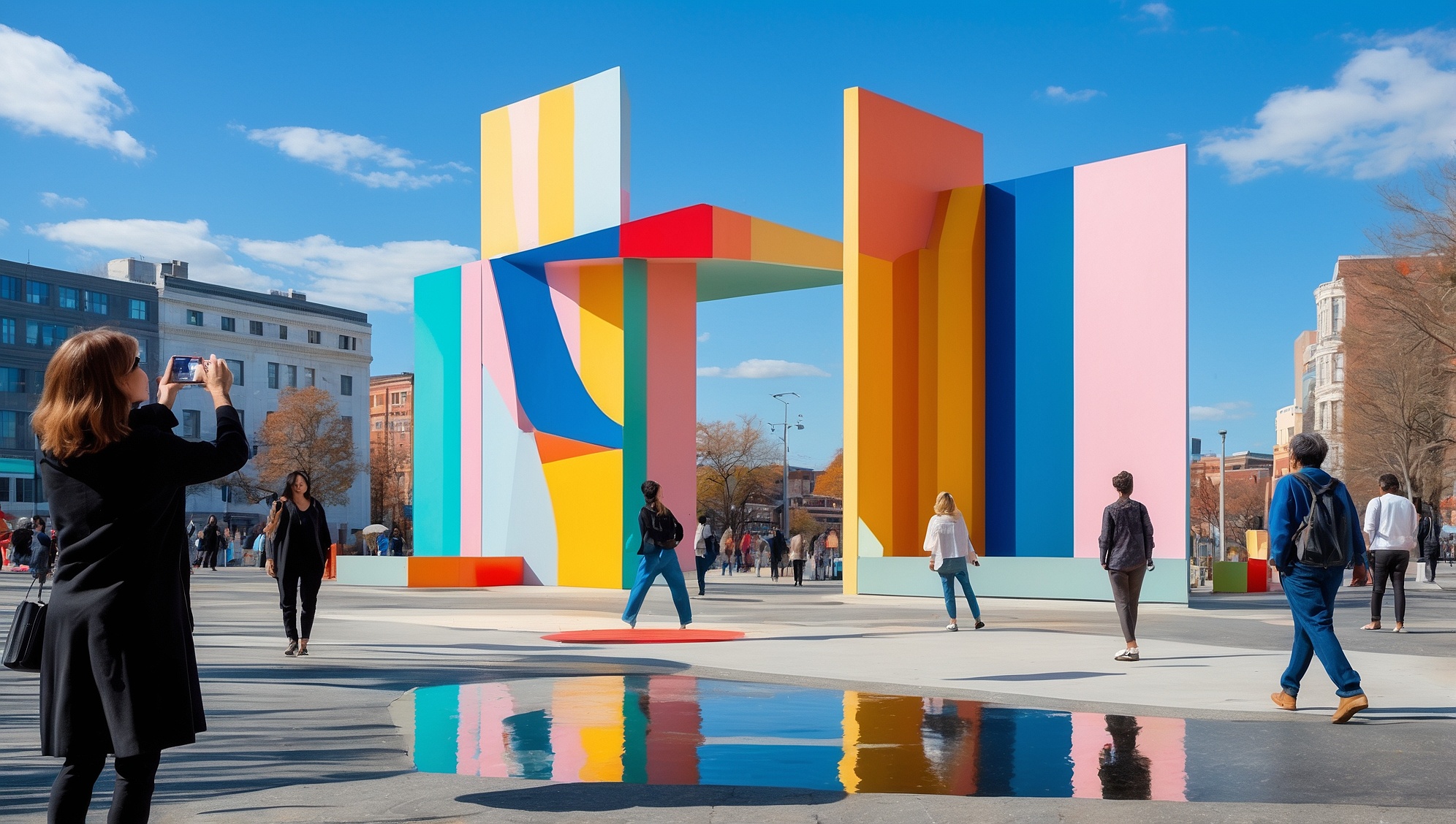Public art installations provide accessible, impactful cultural experiences that connect communities, tell stories, and inspire reflection. Across the region, these installations have become a cornerstone of urban and rural landscapes, showcasing creativity and fostering engagement with art in everyday life. This article highlights key installations that are transforming public spaces and the way we interact with art.
Interactive Installations That Invite Participation
Public art often invites viewers to become participants, breaking down barriers between artist and audience. Interactive installations in parks and plazas engage passersby in playful or thought-provoking ways.
- “Cloud Arbor” in Pittsburgh features a misting cloud triggered by movement, encouraging interaction while subtly addressing environmental themes.
- “The Musical Swings” in Montreal turns a set of swings into a collaborative musical instrument, producing harmonious notes when people swing together.
These installations not only beautify spaces but also create communal experiences.
Murals: A Canvas for Storytelling
Murals transform city walls into expansive canvases, often reflecting the history, culture, or aspirations of the community.
- “The Great Wall of Los Angeles” spans half a mile and illustrates California’s multicultural history through vivid imagery.
- “East Side Gallery” in Berlin, painted on a section of the Berlin Wall, stands as a testament to freedom and unity, blending art and historical narrative.
Murals provide a visual connection to stories that might otherwise remain untold.
Large-Scale Sculptures in Urban Spaces
Towering sculptures anchor public spaces, offering focal points for cities and towns while serving as symbols of local identity.
- “The Bean” (Cloud Gate) in Chicago, with its mirrored surface, reflects the city’s skyline and invites visitors to interact with their surroundings from new perspectives.
- “Angel of the North” in Gateshead, UK, stands 66 feet tall and represents strength, hope, and resilience.
These sculptures redefine the character of their locales, often becoming synonymous with the cities themselves.
Environmental Installations That Blend Nature and Art
Some public art installations blur the lines between natural landscapes and artistic expression, fostering a deeper connection with the environment.
- “Spiral Jetty” by Robert Smithson is a monumental earthwork extending into Utah’s Great Salt Lake, using natural materials to interact with the lake’s changing conditions.
- “Stone River” at Stanford University, built from rubble salvaged after earthquakes, reflects on cycles of destruction and renewal.
Such works encourage reflection on humanity’s relationship with the natural world.
Light-Based Installations That Transform Nightscapes
Light installations bring public spaces to life after dark, offering dynamic and ever-changing visual experiences.
- “Her Secret Is Patience” in Phoenix features a three-dimensional, illuminated canopy that changes hues with the time of day.
- “Northern Lights” in Norway uses synchronized lights and sounds to simulate the aurora borealis, allowing people to experience this natural phenomenon in urban environments.
These installations redefine how we experience public spaces at night, making them vibrant and inviting.
Temporary Art That Challenges Perception
Ephemeral installations often make bold statements or explore experimental forms, encouraging audiences to engage with art in fleeting moments.
- “The Gates” by Christo and Jeanne-Claude installed 7,503 saffron-colored gates in Central Park, creating pathways of color for 16 days.
- “Ice Watch” by Olafur Eliasson and Minik Rosing brought massive chunks of Greenlandic ice to urban areas, raising awareness about climate change.
Temporary installations highlight the impermanence of art and provoke immediate, visceral responses.
Community-Centric Art That Builds Connections
Art created with or for the community fosters a sense of ownership and pride in shared spaces.
- “Watts Towers” in Los Angeles, built by Simon Rodia over 33 years, reflect the labor and creativity of one man’s dedication to his community.
- “Philadelphia’s Mural Arts Program” transforms neighborhoods with murals created in collaboration with residents, addressing local issues and aspirations.
These projects create lasting impacts by prioritizing the voices of the communities they inhabit.
Digital and Technological Innovations in Public Art
Technology has expanded the possibilities for public art, allowing for dynamic and interactive experiences.
- “Unnumbered Sparks” by Janet Echelman uses LED lights and fiber optics to create a glowing web in the sky, responsive to audience interaction through smartphones.
- “Rain Room” by Random International allows visitors to walk through a downpour without getting wet, combining art with precise engineering.
These installations bridge the gap between physical art and the digital realm.
Memorial Art: Honoring History and Memory
Public art often serves as a powerful medium for remembrance and reflection on historical events.
- “Vietnam Veterans Memorial” in Washington, D.C., features a simple yet poignant design that lists the names of fallen soldiers, inviting visitors to engage with the human cost of war.
- “Stumbling Stones” in Europe place small brass plaques in sidewalks to mark the homes of Holocaust victims, embedding memory into everyday life.
Memorial installations ensure that history remains present and accessible.
Local Gems: Hidden Treasures in Smaller Communities
Smaller towns and rural areas also boast unique public art that reflects their character and creativity.
- “Cadillac Ranch” in Amarillo, Texas, features half-buried cars covered in graffiti, inviting visitors to leave their mark.
- “Prada Marfa” in the Texas desert is a permanent sculpture resembling a Prada store, blending commentary on consumerism with surreal placement.
These installations draw visitors off the beaten path to experience art in unexpected settings.
Public art installations play a transformative role in shaping the cultural identity of a region. By combining aesthetic appeal, community involvement, and innovative techniques, these works ensure that art remains a vital part of public life. From interactive experiences to environmental statements, the diversity of public art invites us to engage with creativity wherever we go.
